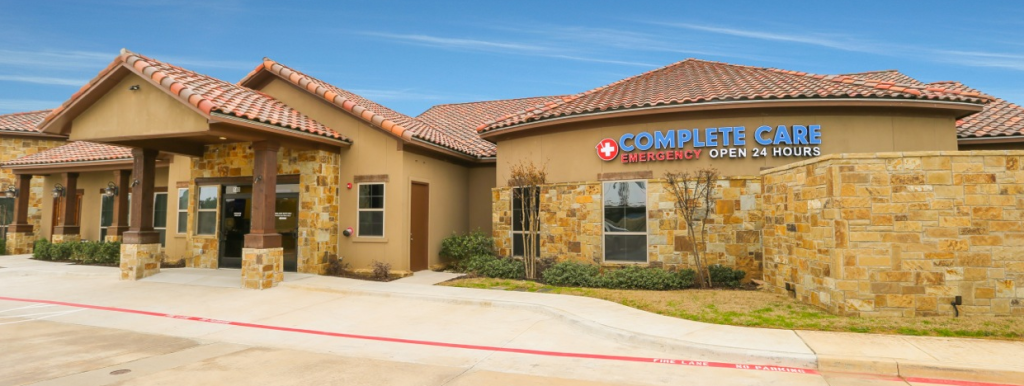Sprained Foot vs Broken Foot: How to Tell the Difference
Breaks & Fractures
•
Feb 10, 2024
Reviewed by: Jeffrey Peebles, M.D

Struggling to tell the difference between a sprained foot vs broken foot? You’re not alone. If you’ve recently injured your foot — whether by playing sports, falling, or dropping a heavy item on it — you may be feeling a great deal of pain. However, because these are such common foot injuries, you may be tempted to tough it out and see if it heals on its own. While the wait-and-see approach is okay for some injuries and illnesses, it could result in complications if you’ve sprained or broken your foot.
How can I tell if I have a broken ankle vs sprained ankle? Symptoms of both injuries are similar and they both require resting to allow your body to heal. In short, a sprained foot involves damage to the ligaments that connect the bones while a broken foot involves damage to the bones themselves. Understanding the differences between the two is crucial for proper treatment and a speedy recovery.
Is my foot broken or sprained?
It can be challenging to differentiate between a sprained and a broken foot, as both injuries share similar symptoms but differ in what part of the foot is injured. A sprained foot occurs when the ligaments that connect the bones are stretched or torn, usually as a result of sudden twisting or rolling of the foot. A broken foot, on the other hand, involves a fracture in one or more of the bones in the foot.
Here is how you can tell the difference between a sprained foot vs broken foot using their distinctive symptoms. We will also be discussing the differences between their recovery time as well as treatment options.
Sprained foot symptoms
- Pain and tenderness: The affected area is likely to be painful, and you may experience tenderness when touching or applying pressure.
- Swelling: Swelling is a common response to injury as the body sends extra fluid and blood to the affected area to promote healing.
- Bruising: Damage to blood vessels during the injury can result in bruising, leading to discoloration of the skin.
- Difficulty moving or putting weight on the foot: The pain, swelling, and bruising may make it challenging to move the foot comfortably or put weight on it.
- Mild to moderate pain: The pain associated with a sprained foot is generally mild to moderate, depending on the severity of the sprain.
Diagnosis and treatment
A foot sprain will be diagnosed by taking X-rays of the injured foot. This is done to confirm whether it’s a sprain or a fracture, as well as to determine the severity of the injury. Once a diagnosis has been confirmed, treatment will depend on the type of sprain. For a Grade I or Grade II sprain, you’ll need crutches for anywhere between 2-4 weeks. For a Grade III sprain, you may need surgery and will have to stay off your foot for up to eight weeks or longer if instructed by your doctor. You’ll also need crutches to stay off the injured foot while you heal.
Recovery time
Sprained foot recovery time will depend on the severity of the sprain and your injury history. Mild sprains may heal within a week or two with rest, ice, compression, and elevation (R.I.C.E.). However, more severe sprains may require medical attention, such as physical therapy, to ensure proper healing. It’s essential to avoid putting excessive strain on the foot during the recovery period.
Broken foot symptoms
- Hearing a snap or cracking sound: Some individuals may hear a snap or cracking sound at the time of the injury, indicating the bone break. However, not everyone experiences this auditory cue.
- Intense pain, especially when pressure is applied: The pain associated with a broken foot is often more intense than that of a sprained foot. Applying pressure or bearing weight on the foot can exacerbate the pain.
- Swelling and bruising: Similar to a sprained foot, swelling and bruising are common symptoms of a broken foot. These occur due to the body’s response to the injury.
- Deformity or misalignment of the foot: A noticeable deformity or misalignment of the foot may be present in the case of a broken foot. The bones may not align properly, leading to a visible change in the foot’s shape.
- Inability to bear weight on the foot: Unlike a sprained foot where weight-bearing might be challenging, individuals with a broken foot may find it nearly impossible to bear any weight on the affected foot due to the intense pain.
- Sharp and persistent pain: The pain associated with a broken foot is often sharp and persistent, continuing even when at rest. It may be more severe than the pain experienced with a sprained foot.
Diagnosis and treatment
Just like with sprains, your doctor will utilize advanced imaging techniques such as X-rays to confirm the diagnosis and assess the full extent of the injury. In cases of stress or hairline fractures, a CT scan might be necessary for a more detailed detection of the break. Your broken foot treatment will be determined based on the severity of the fracture and may encompass:
- Pain management through prescribed medications
- Bone manipulation to ensure proper alignment
- Application of a cast
- Utilizing crutches or a wheelchair to avoid bearing weight on the affected foot
- Can I walk on a fractured foot? No, standing and walking with a broken foot will only put additional pressure on the fracture site, leading to potential delays and complications in the healing process.
- Taking time off sports and other strenuous activities
- Surgery (reserved for the most severe cases as a last resort)
Recovery time
Broken foot recovery time will vary depending on the severity of the injury and whether you have any underlying health issues such as diabetes, anemia, low vitamin D levels, or hypothyroidism. Generally, a mild to moderate fracture should heal in approximately eight weeks.
Always seek medical attention if you think your foot is broken. Failing to do so could lead to bone deformities and/or post-traumatic arthritis — and both of these conditions could result in lifelong chronic pain.
What causes fractures and sprains?
Foot sprains can occur due to various reasons, and they often result from the stretching or tearing of ligaments that support the joints in the foot. Common causes of foot sprains include:
- Trauma or injury
- Landing on an uneven surface
- Overuse or repetitive movements (often seen in sports)
- Wearing inappropriate or unsupportive footwear
- Exercising without a proper warmup (read our exercise safety tips)
- Previous injuries that made the muscles weaker
Foot fractures, on the other hand, typically occur in more serious situations. Common scenarios that can result in a broken foot include:
- Intense trauma or injury
- Enduring a fall or slip injury (fractures are one of the most common hiking injuries)
- Twisting or rolling the foot
- Repetitive stress
- Heavy objects falling on the foot
- Osteoporosis
- Severe accidents or injuries
Complete Care can treat your sprained or broken foot
Whether you’re dealing with a sprained foot vs broken foot, finding the right medical care is necessary. The medical staff at Complete Care knows the difference between a sprained ankle and a fractured ankle and how to diagnose and treat each injury properly. Because we are a freestanding emergency room, we can have you examined, diagnosed, and treated in less time due to our low wait times and efficient quality of care.
We offer hospital-grade, on-site digital imaging services including X-rays, CT scans, and more to get the results you need in minutes. If you believe that you have sprained or broken your foot, trust Complete Care with your injury.
We have multiple locations in Texas (Austin, Corpus Christi, Dallas/Fort Worth, East Texas, Lubbock, and San Antonio) and in Colorado Springs that are open 24/7 to care for you and your family.
More Helpful Articles by Complete Care:
- Surprising Christmas Injuries and How to Prevent Them
- Why Patients Say Complete Care is the Best Emergency Room
- When to Go to the ER After a Skiing Accident
- When to Go to the ER for the Flu
- The Dangers of Overeating on Thanksgiving
